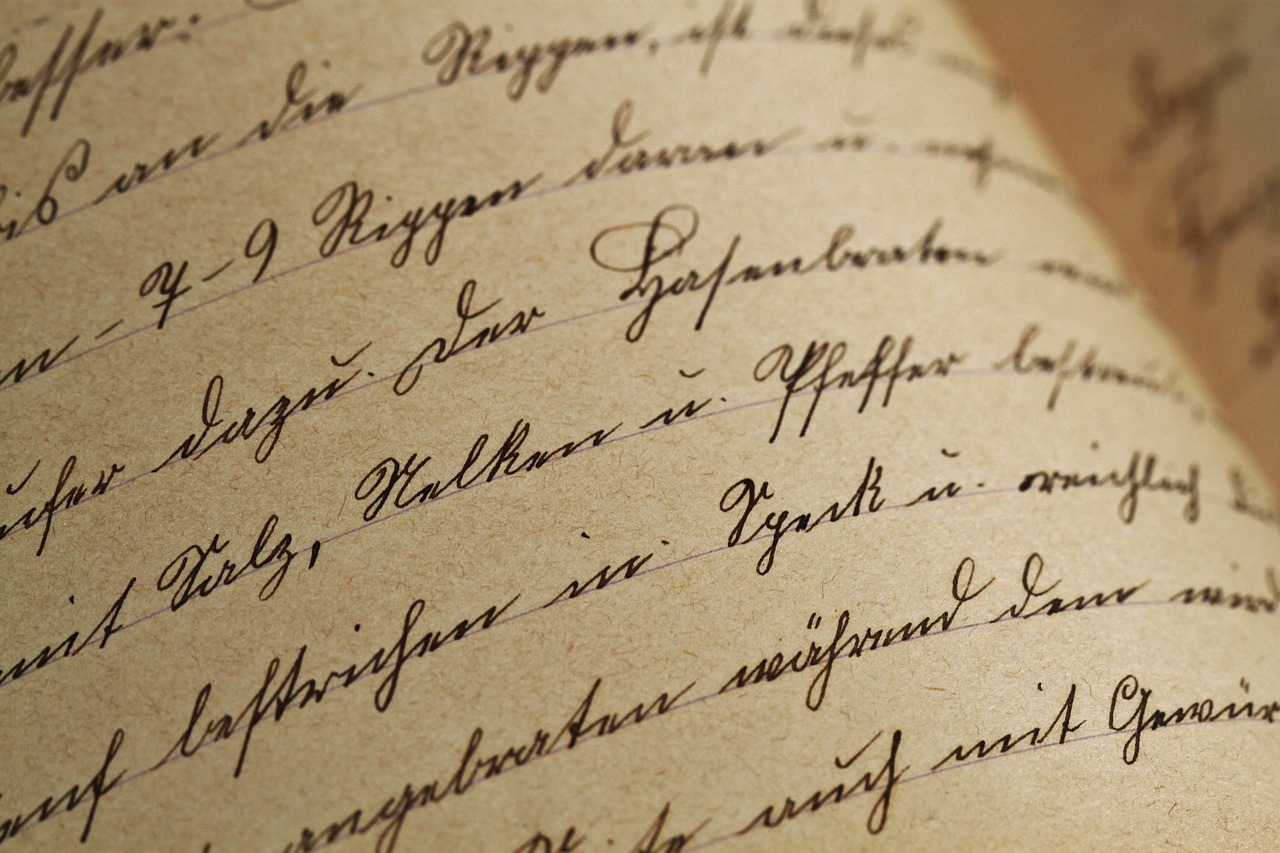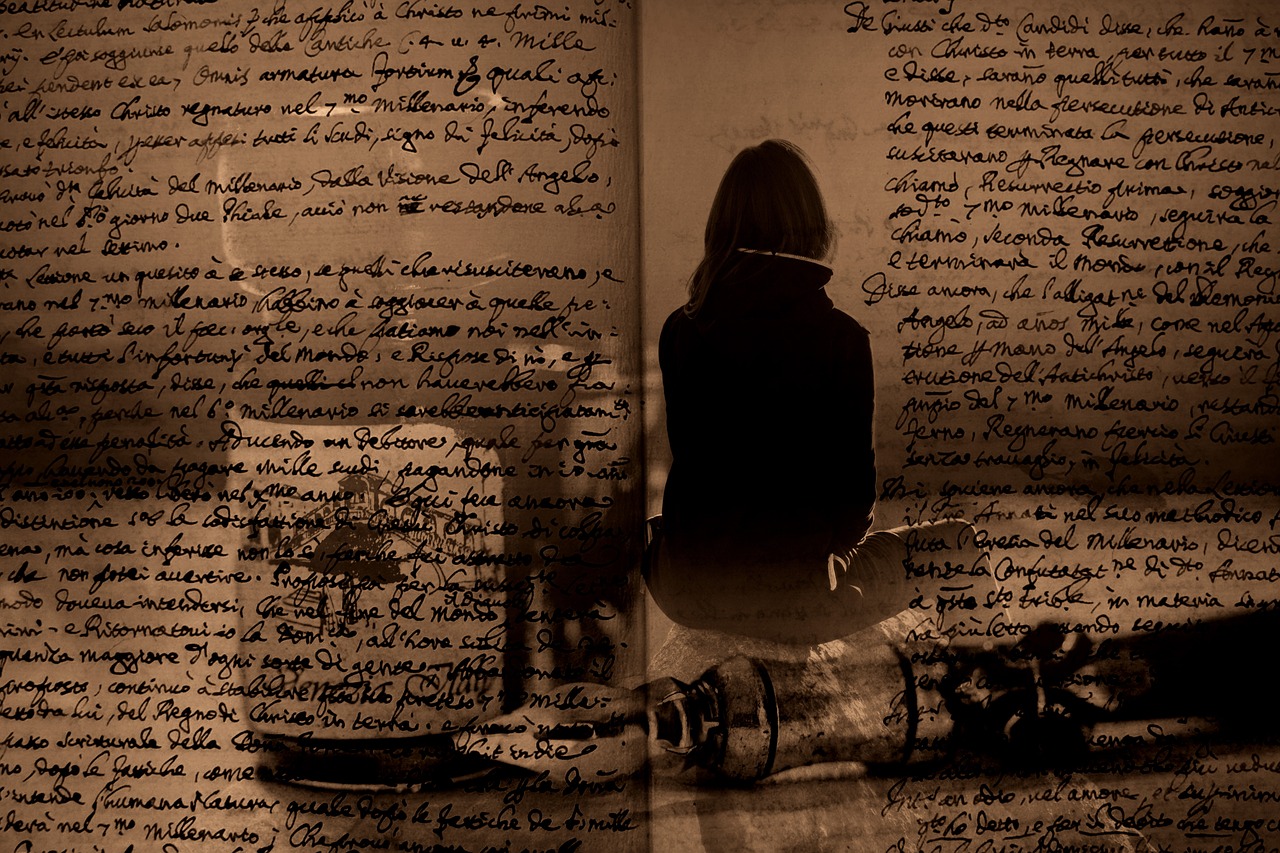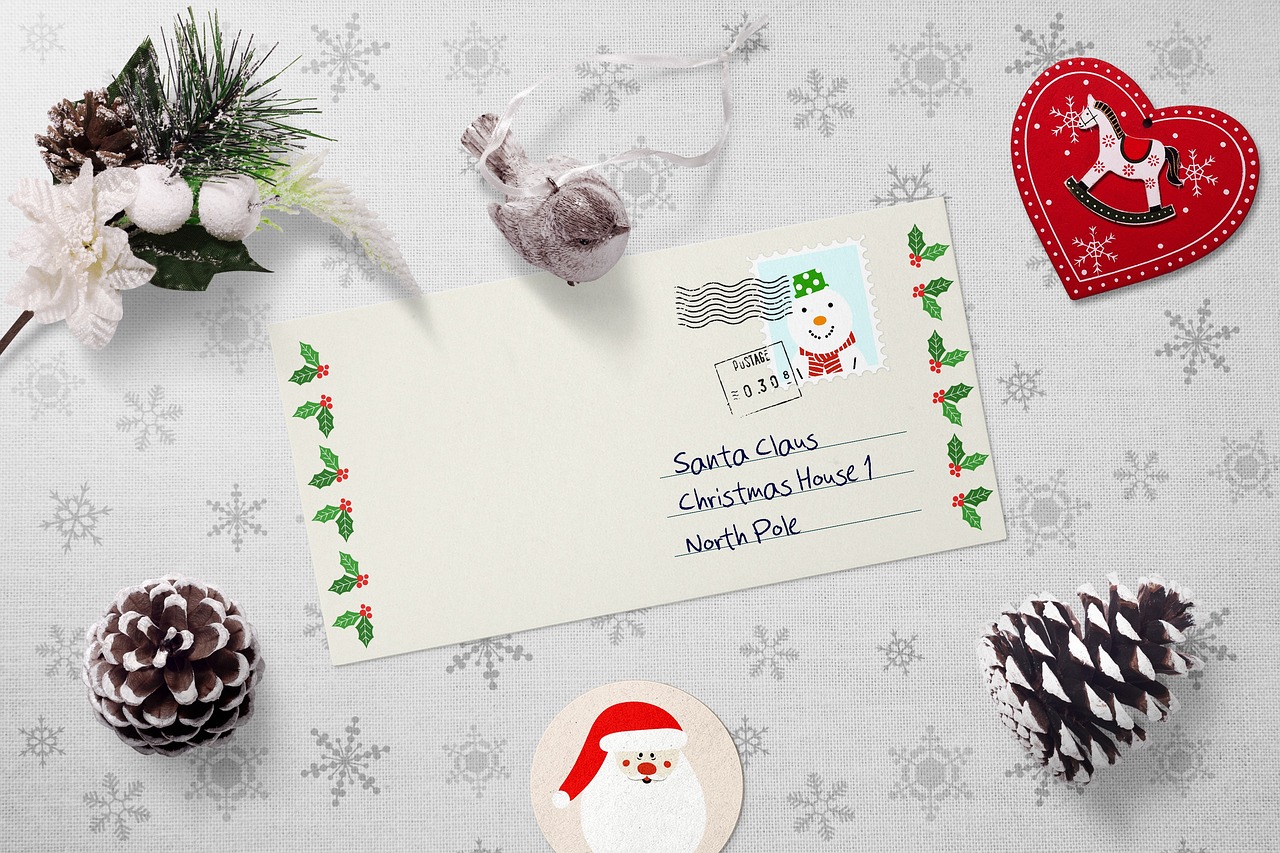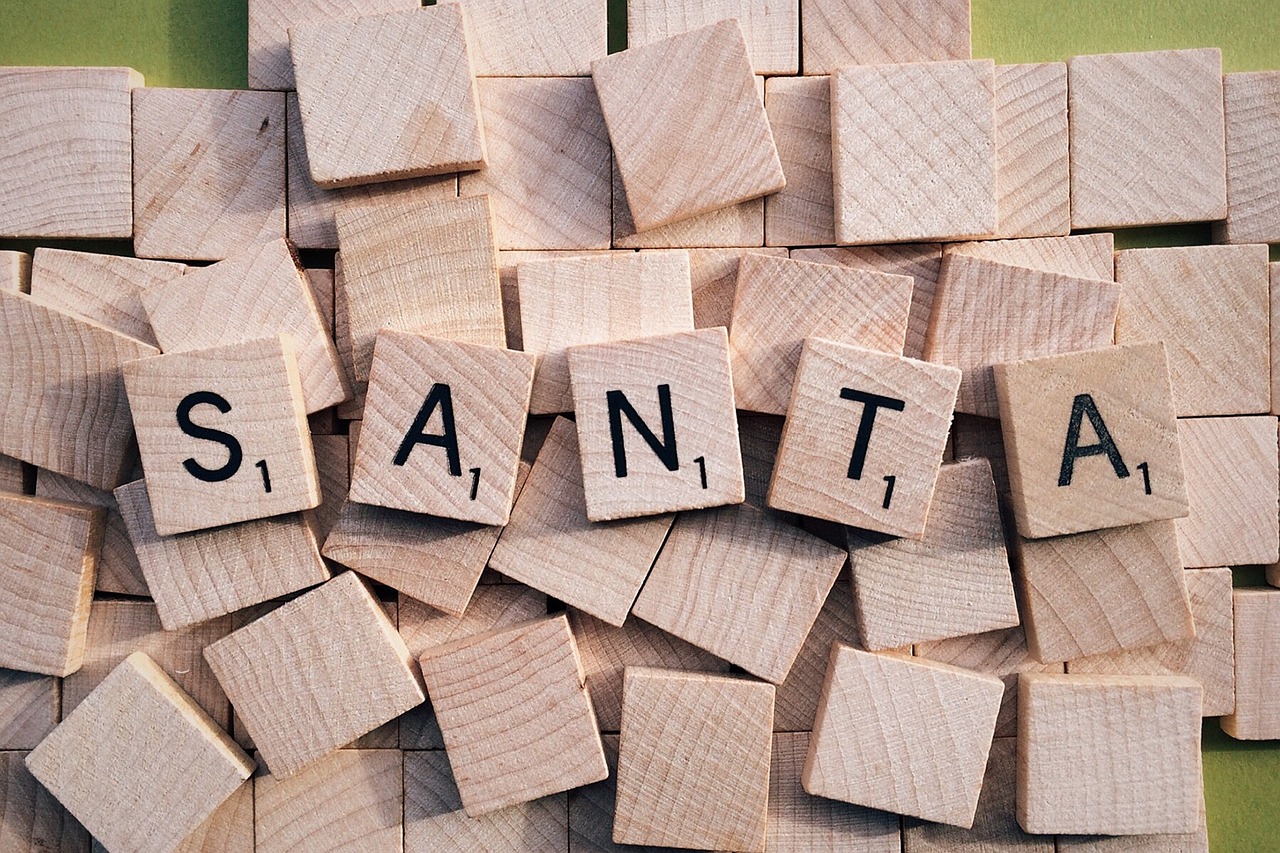How to Craft Your Kids' Letters to Santa
Writing a letter to Santa is one of those magical traditions that can light up a child's holiday season. It’s not just about asking for gifts; it’s an opportunity for kids to express their dreams, wishes, and gratitude in a heartfelt way. As parents, you play a crucial role in this process, guiding your little ones through the enchanting journey of letter writing. So, how can you help them craft a letter that truly captures their spirit? Let’s dive into the fun and creativity of writing to Santa!
Before putting pen to paper, it’s essential to explain the magical essence of Santa Claus to your children. Santa isn't just a jolly man in a red suit; he embodies the spirit of giving, joy, and kindness. By understanding this, kids can express their wishes and gratitude more genuinely. Encourage them to think about what they truly want, but also to reflect on the joy of giving and sharing during the holiday season. This understanding will transform their letters into meaningful messages that resonate with the true spirit of Christmas.
The materials you choose for writing the letter can significantly enhance the experience. Think of it as setting the stage for a delightful performance! When kids have fun paper, colorful pens, and creative decorations, they’re more likely to get excited about writing. Here are some ideas:
Using festive-themed paper can make the letter more visually appealing. You could go for classic Christmas designs or even let your kids create their DIY designs. Imagine them drawing snowflakes or Christmas trees to adorn their letters, showcasing their unique personalities and excitement for the holiday season!
Incorporating vibrant writing tools can make the letter-writing process a blast! Encourage your kids to express their thoughts in lively colors. Just like a painter uses different hues to create a masterpiece, your children can use various pens to bring their letters to life!
Adding stickers and other embellishments allows children to personalize their letters further. Think of it as adding sprinkles on a cupcake—these little touches can turn an ordinary letter into a unique creation that reflects their individuality and festive spirit.
Creating a cozy and festive environment is key to inspiring creativity. Gather around the dining table with some hot cocoa, play some holiday tunes, and watch as your children’s imaginations take flight. This atmosphere not only makes the letter-writing experience enjoyable but also creates lasting memories for the whole family.
Now comes the fun part—crafting the letter! Guiding your children in structuring their letters helps them articulate their wishes, express gratitude, and convey their excitement. Here’s a simple structure to follow:
Encourage kids to begin their letters with a cheerful greeting. Something like "Dear Santa" or "Hello Santa" sets a positive tone and makes the letter feel more personal and inviting.
Teach children to articulate their desires while also thanking Santa for past gifts. This simple act fosters a sense of appreciation and enhances the overall experience of letter writing. A little gratitude goes a long way!
Adding personal anecdotes or memories can make the letters even more special. Encourage your kids to share stories about their favorite holiday moments or recent achievements. This connection makes the correspondence with Santa unique and heartfelt.
Encouraging kids to include their accomplishments in the letter helps them reflect on their growth. Whether it's learning to ride a bike or scoring a goal in soccer, sharing these joys with Santa makes the letter more meaningful.
Creating a wish list is a great way for children to express their desires clearly. This not only helps Santa understand what gifts would bring joy but also teaches kids about setting goals and being specific about their wants.
Discussing various methods of sending the letter can add excitement. Whether through traditional mail, a special mailbox, or even a magical online submission, the anticipation of sending a letter to Santa is part of the fun!
Exploring different mailing options can make the experience more interactive. Perhaps you could create a special mailbox at home where kids can drop their letters, making it a fun ritual every year.
Teaching kids about the journey their letters take can add an element of fun and anticipation. You could even create a little chart to track the letter's journey, enhancing their excitement as they await Santa's response.
Establishing a tradition of receiving a response from Santa can foster excitement and anticipation. This makes the holiday season even more magical for children year after year.
Encouraging parents to craft a response alongside their children can enhance the experience. It allows families to bond while keeping the magic of Santa alive, creating a sense of teamwork and creativity.
Sharing the response as a family creates a joyful atmosphere. This allows everyone to participate in the excitement and reinforces the spirit of giving and kindness during the holidays.
- What age is appropriate for kids to write to Santa? Most children start writing letters to Santa around age 4 or 5, but it can be a fun activity for any age!
- How can I encourage my shy child to write a letter? Try prompting them with questions about what they love about Christmas or their favorite gifts from previous years to help them get started.
- Can we send an email to Santa instead? Absolutely! Many families now use email or online submissions as a modern twist on the traditional letter.

Understanding the Spirit of Santa
Exploring the magical essence of Santa Claus can be an enchanting journey for both parents and children. You see, Santa isn't just a jolly old man in a red suit; he embodies the spirit of giving, joy, and imagination. When children write their letters to Santa, they aren't merely jotting down gift requests; they are engaging in a delightful tradition that connects them to a world of wonder and possibility. This experience encourages kids to think deeply about their wishes and express their gratitude, making it a truly enriching activity.
The essence of Santa can be broken down into several key components that inspire children to write heartfelt letters:
- Generosity: Santa represents the joy of giving, reminding children that the holiday season is not just about receiving gifts but also about sharing love and kindness with others.
- Imagination: The magic of Santa sparks creativity. Kids can let their imaginations run wild as they think about what they want and how they want to express it.
- Gratitude: Writing to Santa provides a wonderful opportunity for children to reflect on past gifts and express thanks, fostering a sense of appreciation.
- Tradition: Engaging in this beloved holiday custom helps children feel connected to their family and community, creating lasting memories.
When kids understand the spirit of Santa, they are more likely to write letters that are filled with heartfelt sentiments and genuine wishes. This connection transforms the letter-writing process into a beautiful ritual that can be cherished for years to come. As parents, guiding children through this process allows you to share in the joy and excitement of the holiday season, making it a magical experience for the whole family.

Choosing the Right Materials
When it comes to crafting heartfelt letters to Santa, the materials you choose play a pivotal role in setting the tone for the entire experience. The right supplies can transform a simple letter into a vibrant expression of a child's imagination and excitement. Think of it like setting the stage for a grand performance; the more colorful and engaging the backdrop, the more captivating the show! So, what materials should you consider to make this festive task a memorable one?
First off, the paper is essential. Opt for festive-themed paper that resonates with the holiday spirit. You can find an array of options, from traditional red and green designs to whimsical patterns featuring Santa, reindeer, and snowflakes. Alternatively, why not let your kids unleash their creativity by designing their own paper? A blank canvas allows for doodles, drawings, and personal touches that reflect their unique personalities. This way, the letter becomes a true work of art, showcasing their excitement for the season!
Next, let’s talk about writing tools. The pens and markers you choose can significantly impact how your child expresses their thoughts. Vibrant colors can bring the letters to life, making the writing process feel like an adventure. Imagine your child using a bright blue pen to write, “Dear Santa,” followed by a swirl of colorful doodles around the edges. It’s not just about the words; it’s about the entire aesthetic experience! Encourage them to experiment with different colors and styles, perhaps even using glitter pens for that extra sparkle.
Now, what would a letter to Santa be without some stickers and embellishments? Adding stickers of Christmas trees, stars, or even their favorite cartoon characters can personalize the letter in a fun way. These little touches not only make the letter visually appealing but also allow children to express their individuality. You might even consider creating a small embellishment station where they can choose their favorite stickers, ribbons, and other decorative items. This can turn the letter-writing into a delightful craft session!
Lastly, let’s not forget about the atmosphere in which you’re writing. A cozy, festive environment can spark creativity and joy. Set up a designated writing nook adorned with twinkling lights, holiday decorations, and perhaps some warm cookies and milk to fuel the creativity. The key is to make the experience enjoyable and memorable, so your child looks forward to writing their letter each year.
In summary, choosing the right materials for writing to Santa can elevate the entire experience. From festive paper and colorful pens to fun stickers and a cozy writing atmosphere, each element contributes to a magical moment that your child will cherish. So gather those supplies and watch your little ones light up with excitement as they pour their hearts out to Santa!

Fun Paper Options
When it comes to writing letters to Santa, the paper you choose can set the entire tone of the experience. Imagine your child’s excitement as they select from a variety of festive options that resonate with the magic of the holiday season! Using themed paper can transform a simple letter into a cherished keepsake. Think about designs adorned with snowflakes, Santa's sleigh, or even playful reindeer. These vibrant visuals not only capture the essence of Christmas but also inspire children to pour their hearts into their writing.
But why stop at just store-bought paper? Encouraging kids to create their own DIY designs can be a fantastic way to let their creativity shine. A plain piece of paper can become a canvas for their imagination! They can draw their favorite holiday scenes, use crayons to add splashes of color, or even collage cutouts from magazines. This personal touch not only makes the letter more visually appealing but also gives children a sense of ownership and pride in their creation.
To help you get started, here’s a quick comparison table of different paper options:
| Paper Type | Description | Pros |
|---|---|---|
| Festive Themed Paper | Pre-printed designs with Christmas motifs. | Easy to use, visually appealing, and sets a joyful tone. |
| DIY Paper | Plain paper decorated by the child. | Highly personal, encourages creativity, and can be unique. |
| Recycled Paper | Using old wrapping paper or cardboard. | Eco-friendly, cost-effective, and can have a vintage charm. |
By allowing children to choose or create their paper, you’re not just making a letter; you’re crafting a memorable experience filled with joy and creativity. The excitement of selecting the perfect paper can ignite their enthusiasm for writing, making it a fun family activity that everyone can enjoy together.

Colorful Pens and Markers
This article provides a fun and engaging guide for parents on how to help their children write heartfelt letters to Santa, ensuring a memorable holiday experience filled with creativity and joy.
Exploring the magical essence of Santa Claus can inspire children to express their wishes and gratitude genuinely in their letters, making the experience more meaningful and enjoyable for both kids and parents.
Selecting the perfect paper, pens, and decorations can enhance the letter-writing experience, encouraging kids to get creative and personal with their correspondence to Santa.
Using festive-themed paper or even DIY designs can make the letter more visually appealing, allowing children to showcase their personality and excitement for the holiday season.
Incorporating vibrant writing tools can make the letter-writing process more enjoyable, helping kids express their thoughts in a lively and imaginative way. Imagine your child picking up a bright red pen to write, "Dear Santa," followed by a swirl of colorful doodles that capture their excitement for the holidays. The choice of colors isn't just about aesthetics; it's about creating a fun atmosphere that encourages creativity. You could even set up a little station with an array of pens and markers, allowing them to choose their favorites.
Consider having a variety of pens, such as:
- Gel Pens: These glide smoothly and come in an array of colors, perfect for adding a splash of vibrancy.
- Glitter Markers: Who doesn't love a little sparkle? Glitter markers can add a magical touch to their letters.
- Highlighters: These can be used to emphasize certain wishes or thoughts, making them pop off the page.
Encouraging your child to experiment with different colors can also spark discussions about their feelings and wishes. For instance, they might choose blue for something they really want, or green to express their gratitude. This process not only makes the letter more visually appealing but also helps children articulate their emotions and desires more clearly. So, set the stage for a colorful adventure and watch as their creativity unfolds!
Adding stickers and other embellishments allows children to personalize their letters, turning them into unique creations that reflect their individuality and festive spirit.
Creating a cozy and festive environment can inspire creativity, making the letter-writing experience more enjoyable and memorable for children and their families.
Guiding children in structuring their letters helps them articulate their wishes, express gratitude, and convey their excitement, ensuring their letters are heartfelt and meaningful.
Encouraging kids to begin their letters with a cheerful greeting sets a positive tone and makes the letter feel more personal and inviting for Santa.
Teaching children to articulate their desires while also thanking Santa for past gifts fosters a sense of appreciation and enhances the overall experience of letter writing.
Adding personal anecdotes or memories can make the letters more special, allowing children to connect with Santa in a unique and heartfelt way.
Encouraging kids to include their accomplishments in the letter helps them reflect on their growth and share their joy with Santa, making the correspondence even more meaningful.
Creating a wish list in the letter allows children to express their desires clearly, making it easier for Santa to understand what gifts would bring them joy this holiday season.
Discussing various methods of sending the letter can add excitement, whether through traditional mail, a special mailbox, or even a magical online submission.
Exploring different mailing options can make the experience more interactive, allowing children to feel involved in the process of sending their letters to Santa.
Teaching kids about the journey their letters take can add an element of fun and anticipation, enhancing their excitement as they await Santa's response.
Establishing a tradition of receiving a response from Santa can foster excitement and anticipation, making the holiday season even more magical for children year after year.
Encouraging parents to craft a response alongside their children can enhance the experience, allowing families to bond while keeping the magic of Santa alive.
Sharing the response as a family creates a joyful atmosphere, allowing everyone to participate in the excitement and reinforcing the spirit of giving and kindness during the holidays.
Q: What should my child include in their letter to Santa?
A: Encourage your child to include a warm greeting, their wishes, expressions of gratitude, and any personal touches that reflect their personality.
Q: How can I make the letter-writing process more exciting?
A: Set up a festive writing station with colorful pens, fun paper, and stickers. Create a cozy atmosphere with holiday music or decorations.
Q: Is it necessary to send the letter through traditional mail?
A: Not at all! You can create a special mailbox at home or even submit the letter online through various Santa websites.
Q: How can I help my child feel connected to Santa?
A: Encourage them to share personal stories, achievements, and feelings in their letters. This connection can make the experience more meaningful.

Stickers and Embellishments
When it comes to crafting those magical letters to Santa, play a crucial role in making the experience not just fun, but also visually captivating. Imagine your child’s eyes lighting up as they sift through a treasure trove of colorful stickers, glittery stars, and festive decorations! These little additions can transform an ordinary letter into a delightful masterpiece that truly reflects the spirit of the season.
Using stickers allows children to personalize their letters in a way that words alone often can't capture. They can choose from a variety of themes—whether it’s jolly Santas, sparkling snowflakes, or adorable reindeer. Each sticker can tell a story or highlight a specific wish. For example, if your child wishes for a new toy, they can stick a picture of that toy right next to their request. This not only makes their letter more engaging but also helps Santa visualize their desires.
Additionally, embellishments like glitter, washi tape, or even hand-drawn doodles can add a personal touch that makes the letter feel even more special. Encourage your child to let their imagination run wild! They could create a border of colorful tape or sprinkle a little glitter to mimic the magic of snow. Just remember, while these additions can be exciting, moderation is key. Too many embellishments might make it hard for Santa to read the heartfelt message underneath!
To help you get started, here’s a quick table of popular sticker and embellishment ideas that can elevate your child's letter-writing experience:
| Type | Examples | Purpose |
|---|---|---|
| Stickers | Santa Claus, Snowmen, Christmas Trees | Add fun visuals and highlight wishes |
| Glitter | Gold or Silver Glitter | Enhance the festive feel |
| Washi Tape | Holiday Patterns | Create borders or sections in the letter |
| Doodles | Stars, Hearts, Candy Canes | Add a personal artistic touch |
Incorporating these elements not only makes the letter more visually appealing but also allows children to express their creativity and individuality. As they carefully select each sticker and embellishment, they engage in a process that fosters their artistic side while also deepening their connection to the holiday spirit. So, gather your supplies, unleash your creativity, and watch as your child crafts a letter to Santa that is as unique as they are!
Q: What age is appropriate for kids to start writing letters to Santa?
A: Kids can start writing letters to Santa as soon as they can express their thoughts, usually around ages 3 to 4. It's a great way to encourage writing and creativity!
Q: How can I help my child with their letter?
A: Encourage them to express their wishes and feelings. You can guide them with prompts or examples, but let them take the lead in writing.
Q: Do I need to send the letter by mail?
A: While traditional mail is common, you can create a special mailbox at home or even use online services that simulate sending letters to Santa.
Q: What should we do with the letter after sending it?
A: You can keep a copy as a keepsake or read it together as a family during the holidays to relive the memories!

Setting the Right Atmosphere
Creating the perfect atmosphere for writing letters to Santa is not just about the physical space; it’s about infusing the moment with magic and joy. Imagine the scene: twinkling lights, the scent of freshly baked cookies wafting through the air, and soft holiday music playing in the background. This enchanting environment can spark creativity in your children, making the letter-writing experience not just a task, but a cherished memory.
Start by transforming your living space into a cozy nook. You can drape some colorful blankets over chairs, light a few candles (safely, of course!), and set up a small table where the kids can write. This dedicated area can become their little Santa's workshop. Encourage them to bring their favorite stuffed animals or holiday decorations to personalize their space further. The more comfortable and festive they feel, the more likely they are to pour their hearts into their letters.
Consider adding some fun elements to the atmosphere. Here are a few ideas to get you started:
- Holiday Crafts: Set out some craft supplies like colored paper, glitter, and glue. Kids love to create, and making holiday decorations can get them in the spirit.
- Warm Beverages: Prepare some hot chocolate or apple cider to sip on while they write. The warm drinks can make the experience feel even more special.
- Storytime: Before diving into letter writing, read a classic Christmas story together. This can inspire them and set a joyful tone for their correspondence.
As the kids settle down to write, remind them that this is their chance to connect with Santa in a personal way. Encourage them to think about their favorite holiday memories, the joy of giving, and the excitement of the season. This reflection can help them craft letters that are not only filled with wishes but also with heartfelt sentiments. You might even want to join in on the fun by writing your own letter to Santa, showing them that the magic of the holiday is for everyone!
In summary, setting the right atmosphere is all about creating a magical experience that encourages creativity and heartfelt expression. With a cozy setup, some festive snacks, and a sprinkle of holiday cheer, you can help your children write letters to Santa that they will remember for years to come.
Q1: What materials do I need to help my child write a letter to Santa?
A1: You will need some festive paper, colorful pens or markers, and any decorations like stickers or glitter that your child might want to use to personalize their letter.
Q2: How can I inspire my child to write a meaningful letter?
A2: Encourage them to think about their favorite holiday memories, express gratitude for past gifts, and share their wishes. Creating a cozy and festive atmosphere can also help inspire creativity.
Q3: What are some fun ways to send the letter to Santa?
A3: You can mail it traditionally, use a special mailbox designed for Santa, or even submit it through a magical online portal if available. Make the sending process exciting!
Q4: How can we create a tradition around receiving a response from Santa?
A4: Establish a family tradition where you write a response together, allowing your child to engage in the magic of Santa. Reading the response aloud as a family can enhance the experience.

Crafting the Perfect Message
When it comes to writing a letter to Santa, the message is where the magic truly happens. It’s not just about listing gifts; it’s about capturing the essence of the holiday spirit. So, how can you help your kids craft the perfect message that reflects their wishes and gratitude? Start by guiding them through the structure of their letter. A well-organized letter not only makes it easier for Santa to read but also helps children articulate their thoughts clearly.
Begin with a warm greeting. Encourage your little ones to address Santa in a cheerful and inviting way. A simple "Dear Santa" or "Hello Santa!" can set a delightful tone for the letter. This initial greeting is like the opening scene of a holiday movie—it sets the stage for everything that follows. After the greeting, it’s important to dive into the heart of the message. Kids should express their wishes openly and honestly. For example, they might say, "I have been really good this year, and I would love a new bike!" This direct approach helps Santa understand exactly what will bring joy to their holiday season.
While wishes are important, don’t forget to sprinkle in some gratitude. Teaching children to thank Santa for the gifts they received last year can create a sense of appreciation. A simple line like, "Thank you for the awesome toy you brought me last Christmas!" can go a long way in making the letter feel personal and heartfelt. This balance of wishes and gratitude not only enhances the letter but also encourages children to reflect on the joy they’ve already experienced.
Now, here’s where it gets even more special: incorporating personal touches. Encourage your kids to share a few personal anecdotes or memories. For instance, they might mention a fun family outing or a new skill they’ve learned, like riding a bike or baking cookies. This not only makes the letter unique but also helps Santa connect with them on a more personal level. A letter that includes personal stories is like a warm hug—it conveys love and connection.
Lastly, it can be beneficial to create a holiday wish list within the letter. This list can be a simple bullet point format, making it easy for Santa to see exactly what gifts would make them happy. For example:
- A new bike
- Art supplies
- Books about dinosaurs
This clear expression of desires ensures that Santa knows what to look for when he’s making his list and checking it twice. By combining heartfelt wishes, gratitude, personal anecdotes, and a clear wish list, your kids can create a letter that not only captures their holiday spirit but also makes the experience of writing to Santa truly magical.

Starting with a Warm Greeting
When it comes to writing letters to Santa, the first step is often the most crucial: starting with a warm greeting. This isn’t just a formality; it’s an opportunity for children to set the tone for their message. Imagine Santa sitting in his cozy workshop, surrounded by the twinkling lights of the North Pole, reading each letter with anticipation. A cheerful greeting can instantly make the letter feel more personal and inviting, making it easier for Santa to connect with the child’s spirit.
Encourage your child to kick off their letter with something heartfelt and joyful. Phrases like "Dear Santa," or "Hello Santa!" can work wonders. But why stop there? Let them get creative! They could even say something like "Ho Ho Ho, Santa! I hope you’re having a wonderful time with the reindeer!" This adds a sprinkle of personality and warmth that can make their letter stand out.
Here are a few tips to help your child craft that perfect opening:
- Be Cheerful: Remind them that Santa loves happiness. A positive tone can set the mood for the entire letter.
- Use Exclamation Points: A few well-placed exclamation points can convey excitement. For example, "I can’t wait for Christmas!"
- Ask About Santa: Including a question like "How are the reindeer?" shows that they care about Santa too!
By starting with a warm greeting, children can express their excitement and create a friendly atmosphere. This not only makes the letter more enjoyable for Santa to read but also helps children feel more connected to the magic of the season. So, let your child unleash their creativity and watch as their letter transforms into a delightful piece of holiday cheer!

Expressing Wishes and Gratitude
When it comes to writing a letter to Santa, one of the most important aspects is expressing wishes and gratitude. This isn’t just about asking for gifts; it’s about creating a connection with the spirit of the season. Encourage your kids to think about what they truly desire this holiday season, but also to reflect on what they are thankful for. This dual focus can make their letter more heartfelt and meaningful.
Start by guiding your children to articulate their wishes clearly. They might want to list a few items, but it’s essential to help them understand that it’s not just about the quantity but the thought behind each request. For instance, they could say, “Dear Santa, I would love a new bike because it will help me ride with my friends,” rather than just writing “I want a bike.” This way, they are not only stating their desire but also explaining why it matters to them.
Additionally, teaching children to express gratitude can be a wonderful lesson in appreciation. Encourage them to thank Santa for the gifts they received last year or for the joy he brings during the holiday season. A simple line like, “Thank you for the awesome toys you brought me last Christmas!” can go a long way in making their letter feel more genuine. This practice fosters a sense of appreciation and reminds them that the holiday spirit is about giving, not just receiving.
Here’s a fun idea: create a Wish and Gratitude Table together! This can be a simple two-column table where one side lists their wishes and the other side expresses gratitude. This visual representation can make the process more engaging and help them organize their thoughts. For example:
| Wishes | Gratitude |
|---|---|
| A new bike | Thank you for the awesome toys! |
| A puppy | Thanks for my last year's gifts! |
| Art supplies | Thank you for the fun family moments! |
By incorporating both wishes and gratitude into their letters, children can create a more balanced and thoughtful message that truly captures the essence of the holiday spirit. This approach not only enhances their letter-writing experience but also instills valuable lessons about appreciation and kindness that they can carry with them throughout their lives.
So, as you sit down with your little ones to help them write their letters to Santa, remind them that it's not just about what they want, but also about celebrating the joy of giving thanks. This will make their letters not only special for Santa but also a cherished memory for your family.
- What should my child include in their letter to Santa? Encourage them to express their wishes, share gratitude for past gifts, and include a personal touch, like a favorite memory from the year.
- How can I help my child with their letter? Sit down together, discuss what they want to say, and guide them through the writing process. Use fun materials to make it more engaging!
- Is it necessary to send the letter? While sending the letter can add excitement, the most important part is the experience of writing it and the feelings it evokes.

Incorporating Personal Touches
When it comes to writing letters to Santa, the magic truly unfolds when children incorporate personal touches. These unique elements not only make the letters more special but also create a deeper connection between the child and Santa. Imagine the delight on your child's face as they share their own stories, dreams, and experiences with Santa, making the entire process feel much more personal and heartfelt.
One wonderful way to add a personal touch is by sharing recent achievements. Encourage your child to include a few sentences about what they’ve accomplished over the past year. Whether it's learning to ride a bike, mastering a new skill in school, or helping out with chores at home, these little nuggets of information can bring a smile to Santa’s face. After all, Santa loves to hear how children are growing and changing!
Another way to enhance the letter is by including a holiday wish list. This list can be a fun and creative part of the letter, allowing children to express their desires clearly. Encourage them to think about what gifts would truly bring them joy this holiday season. It could be a new toy, a book they've been eyeing, or even an experience like a trip to the zoo. By articulating their wishes, children not only engage with the spirit of giving but also learn the importance of expressing gratitude.
To make the letter even more vibrant, consider adding a few drawings or doodles that represent their wishes or favorite holiday memories. This visual element can transform a simple letter into a colorful masterpiece that showcases their creativity. You might be surprised at how much fun children have decorating their letters with drawings of snowmen, Christmas trees, or even Santa himself!
Lastly, don’t forget to encourage your child to include a little note of gratitude. A simple sentence thanking Santa for the gifts they received last year or for the joy he brings during the holiday season can make the letter feel warm and inviting. This act of appreciation not only enhances the letter but also teaches children the value of gratitude.
Incorporating these personal touches transforms a standard letter into a cherished keepsake. It’s not just about what’s written; it’s about the love, creativity, and connection that goes into crafting each word. So, grab those colorful pens and festive paper, and let your child's imagination soar as they write their heartfelt note to Santa!
- What should my child include in their letter to Santa? Encourage them to share their wishes, achievements, and a note of gratitude.
- Can we send the letter electronically? Yes! Many families opt for online submissions, which can be just as magical.
- How can I help my child feel connected to Santa? Encourage them to share personal stories and memories that they want Santa to know.
- What if my child is too young to write? You can help by writing down their thoughts as they dictate them to you.

Sharing Recent Achievements
When it comes to crafting a letter to Santa, one of the most delightful aspects is sharing recent achievements. Children often have so much to be proud of, and expressing these accomplishments in their letters not only allows them to reflect on their growth but also creates a unique connection with Santa. Imagine the joy on a child's face when they can tell Santa about learning to ride a bike or scoring a goal in soccer! These moments are not just milestones; they are memories that shape their identities.
Encouraging kids to include their achievements in their letters can be a wonderful exercise in self-expression. It’s a chance for them to share their hard work and dedication. Parents can help by prompting them with questions like:
- What is something new you learned this year?
- Did you try any new activities or sports?
- What are you most proud of this holiday season?
By guiding them through these reflections, parents can help their children articulate their thoughts more clearly. For instance, a child might write, "Dear Santa, this year I learned how to swim all by myself! I practiced every week, and I even got a certificate!" This not only showcases their achievement but also conveys their excitement and pride.
Moreover, sharing these achievements can foster a sense of gratitude. When kids take a moment to appreciate their own progress, they often become more thankful for the support they received from family and friends along the way. It’s a beautiful cycle of positivity that enriches the letter-writing experience. Plus, who wouldn’t want to hear about a child's journey to success? Santa, with his jolly nature, would surely love to know how hard they’ve worked to achieve their goals!
In addition, parents can encourage kids to think about how their achievements might relate to their holiday wishes. For example, if a child has been working hard in school and wishes for a new book, they might say, "I have been studying really hard and would love a book about space to learn even more!" This connection between their efforts and their wishes can make the letter even more heartfelt and sincere.
Q: How can I help my child remember their achievements?
A: You can create a simple list together of things they have done throughout the year. Encourage them to think back to special moments, school projects, or new skills they've learned.
Q: Should achievements be included in every letter to Santa?
A: While it’s not necessary, including achievements can add a personal touch and make the letter more meaningful. It's a chance for children to celebrate their growth.
Q: How can I make this process fun for my child?
A: Turn it into a game! Use colorful pens, stickers, and festive decorations to make the letter-writing session exciting. You could even play holiday music in the background to set a cheerful mood.

Adding a Holiday Wish List
When it comes to writing a letter to Santa, one of the most exciting parts for children is creating their very own Holiday Wish List. This is not just a simple list of items; it's a chance for kids to dream big and express their desires in a fun and creative way. By including a wish list in their letters, children can clearly communicate what they hope to find under the tree on Christmas morning, making the experience more interactive and engaging.
To help your child craft the perfect wish list, consider encouraging them to think about a mix of items. This could include:
- Toys: From the latest action figures to plush toys, children often have their hearts set on specific playthings that spark their imagination.
- Books: Encourage them to include books that have caught their interest, fostering a love for reading during the holidays.
- Experiences: Sometimes, the best gifts aren't physical items. Ask your child if they would like to include experiences, like a trip to an amusement park or a family outing.
It's important to remind children that Santa loves to see their creativity shine, so they can feel free to add items that are unique or even homemade. For example, they might want to draw a picture of their dream toy or write a little note explaining why they want each item. This personal touch not only makes the wish list special but also helps Santa understand their wishes better.
Additionally, it can be helpful to create a table to organize their wishes. This table can include columns for the item name, a brief description, and why they want it. Here's a simple example:
| Item Name | Description | Why I Want It |
|---|---|---|
| Action Figure | A superhero figure that can move its arms and legs. | Because I love superheroes and want to create my own adventures! |
| Storybook | A magical tale about a dragon and a princess. | I want to read it before bedtime and dream of adventures. |
Encouraging your child to be thoughtful about their wish list not only makes the process more enjoyable but also teaches them valuable lessons about gratitude and the spirit of giving. Remind them that while it's fun to ask for gifts, the holiday season is also about appreciating what they have and spreading joy to others. This balance will help them create a wish list that reflects their true desires while keeping the magic of the season alive.
Q: How many items should my child include in their wish list?
A: There’s no set number! Encourage your child to think of a few things they really want, but also remind them to include some smaller items or experiences.
Q: Should the wish list be realistic?
A: While it's great to have realistic wishes, the holiday season is also about dreaming big! Encourage your child to include a mix of both.
Q: Can we send a digital wish list to Santa?
A: Absolutely! Many families create digital letters and wish lists. Just make sure to print it out or save it in a special folder for the memories!

Sending the Letter to Santa
Once your little ones have poured their hearts out onto the page, it’s time for the exciting part: sending the letter to Santa! This step is not just about mailing a piece of paper; it’s about creating a moment of magic and anticipation that can light up your child's holiday season. There are several delightful ways to send these cherished letters, each adding its own sprinkle of enchantment to the experience.
First, consider the traditional route: the good old postal service. Kids can place their letters in an envelope, seal it with a festive sticker, and drop it into a mailbox. This method not only teaches them about mailing letters but also gives them a sense of responsibility and involvement in the process. To make it even more special, you could decorate the mailbox with holiday-themed decorations, turning it into a mini Santa’s post office!
Alternatively, you might want to create a special mailbox at home. This could be a decorated box where children can drop their letters, and then you can have a fun little ceremony where you "send" it off to Santa. This method allows for a more personal touch and can be a fun family tradition. You could even set a date for when the mailbox will be "emptied" and the letters sent off, building excitement as the day approaches.
In today’s digital age, you might also consider the option of sending the letter online. Many websites offer the ability to send letters to Santa digitally, complete with a response! This can be a fantastic option for tech-savvy kids and can add a layer of modern-day magic to the experience. Just ensure that the site you choose is safe and reputable.
Regardless of how you choose to send the letter, it’s essential to discuss the journey it will take to reach Santa. Explain to your children that their letters will travel through the postal system, passing by many places before reaching the North Pole. You could even create a tracking chart to map out the journey, making it an educational experience as well. This will not only enhance their excitement but also teach them about how mail works in a fun and engaging way.
Here’s a quick overview of the different methods to send the letter:
| Method | Description | Magic Factor |
|---|---|---|
| Traditional Mail | Send the letter through the postal service. | ⭐️⭐️⭐️⭐️⭐️ |
| Home Mailbox | Create a special mailbox at home for letters to Santa. | ⭐️⭐️⭐️⭐️⭐️ |
| Online Submission | Send the letter digitally through a safe website. | ⭐️⭐️⭐️⭐️ |
In conclusion, sending the letter to Santa is more than just a task; it’s an opportunity to create lasting memories and instill a sense of wonder in your children. Whichever method you choose, make sure to capture the moment with photos or videos, so you can look back on this magical experience for years to come!
Q: What is the best way to send a letter to Santa?
A: The best way depends on your family's traditions! You can use traditional mail, create a special mailbox at home, or even send it online through a safe website.
Q: How can I make the letter more exciting for my child?
A: Involve your child in the process by letting them decorate the envelope, choose fun stickers, or even write a small note about their holiday experiences.
Q: Will Santa really respond to my child's letter?
A: While traditional mail may not guarantee a response, many online services offer personalized replies from Santa, making the experience even more magical!

Choosing a Mailing Method
When it comes to sending your child's heartfelt letter to Santa, the method you choose can add an extra layer of excitement and magic to the experience. After all, what could be more thrilling than watching your child's eyes light up as they send their wishes off into the snowy night? There are several fun and creative ways to ensure that their letter reaches the North Pole, each offering its own unique charm.
One popular option is the traditional mailing method. This involves writing the letter, placing it in an envelope, and sending it off through the postal service. To make it even more special, you can choose a festive stamp or decorate the envelope with holiday-themed stickers. This method not only feels authentic but also allows your child to learn about the postal system and the journey their letter will take.
Alternatively, you might consider creating a special mailbox at home. This could be a simple box decorated with holiday designs where your child can drop their letter. You can then have a fun little ceremony where you "send" the letter together, perhaps even pretending to deliver it to Santa's workshop. This adds a personal touch and makes the experience feel even more magical.
For those who want to embrace technology, there are also online services that allow children to send their letters to Santa digitally. Many of these services offer customizable templates and even the option to receive a response from Santa himself! This method is not only quick and easy but also allows for a modern twist on the classic tradition.
Regardless of the method you choose, the key is to make it an engaging and memorable experience for your child. The anticipation of sending their letter and the excitement of waiting for a response can turn this simple act into a cherished holiday tradition. Remember, the magic of Santa is not just in the gifts he brings, but in the joy and wonder that surrounds the entire experience.
- What is the best way to address the letter to Santa? It's best to use "Santa Claus" and include "North Pole" in the address. For example: Santa Claus, North Pole.
- Can we send letters to Santa via email? Yes! Many online services allow you to send letters digitally, and some even provide responses from Santa.
- How can we track the letter after sending it? If you use traditional mail, you can teach your child about the postal system and how letters travel. For online submissions, some services provide tracking options.
- Is it necessary to send a letter every year? While it's not necessary, sending a letter each year can become a cherished holiday tradition that your family looks forward to.

Tracking the Letter's Journey
Once your child has crafted a heartfelt letter to Santa, the excitement doesn't have to end there! In fact, tracking the journey of their letter can transform the whole experience into an adventure filled with anticipation and wonder. Imagine the thrill of knowing that their letter is on its way to the North Pole, where Santa and his elves are eagerly awaiting to read it! This can be a fantastic way to keep the magic of the season alive.
To make the tracking process engaging, you can introduce your child to the various steps their letter will take. For instance, after you drop the letter in the mailbox, explain how it travels through the postal system. You might say, "First, the letter goes to the local post office, where it gets sorted with other letters. Then, it travels to a larger center before heading off to the North Pole!" This not only builds excitement but also teaches them about the journey letters take in a fun and relatable way.
Consider creating a simple tracking chart together to visualize this journey. You can draw a map on a large piece of paper, marking each stop the letter makes along the way. Here’s a quick example of what that chart might look like:
| Step | Description |
|---|---|
| 1. Local Post Office | The letter is sorted along with others and prepared for delivery. |
| 2. Regional Sorting Center | Letters are organized based on their final destination. |
| 3. North Pole | Santa receives the letters and starts preparing for Christmas! |
Another fun idea is to create a “Santa Letter Tracker” at home. You can use a simple calendar and mark off the days until Christmas, adding a note about where the letter is supposed to be on each day. This way, your child can count down to the big day while feeling connected to Santa's journey. It’s a wonderful way to build excitement for the holidays!
As you track the letter's journey, encourage your child to think about what they hope Santa will say in his response. This can lead to delightful conversations about their wishes and dreams, fostering a deeper connection to the holiday spirit. By making this a family activity, you not only create lasting memories but also strengthen your bond with your child during this magical season.
- How can I help my child write a letter to Santa? Encourage them to express their wishes and gratitude. Use festive materials to make it special!
- What should we include in the letter? A warm greeting, wishes, and personal touches like achievements or memories.
- How can we track the letter? Create a tracking chart or calendar to visualize the letter's journey through the postal system.
- What if my child wants to send their letter electronically? You can create a special email account or use online Santa letter services that simulate the experience.

Creating a Santa Response Tradition
Establishing a Santa response tradition is a fantastic way to keep the magic of the holiday season alive for your children. Imagine their faces lighting up with joy as they receive a letter from Santa himself! This tradition not only adds excitement but also creates lasting memories that your family will cherish for years to come. So, how can you make this happen? Let’s explore some fun ideas!
First, consider the timing. You might want to set a specific date each year when the letter from Santa arrives. This could be just a few days after Christmas or perhaps on Christmas Eve. The anticipation of receiving a letter will build excitement and give your children something to look forward to. You can even create a countdown calendar to mark the days leading up to the big reveal!
Next, think about the content of Santa’s letter. It should feel personal and magical. Include references to your child's recent achievements, such as their performance in school, their kindness to others, or any special moments from the past year. This makes the letter feel genuine and shows your child that Santa is truly paying attention. You could even use a template that allows you to fill in these details each year, making it easier to keep the tradition alive.
Don't forget about the presentation! A beautifully crafted letter can enhance the experience. You can use decorative stationery that resembles something Santa would use, or even print the letter on parchment paper for that extra touch of magic. Adding a sprinkle of glitter or a wax seal can also elevate the presentation, making it feel even more special.
To make this tradition even more interactive, consider involving your children in the process. You could have them help you create the letter by choosing the stationery or even writing a few lines themselves. This way, they feel a sense of ownership and excitement about the whole experience. You might also want to set up a special spot in your home where the letter can be “delivered,” like a mailbox or a special basket designated for Santa's correspondence.
Finally, as part of this tradition, encourage your children to read the letter aloud. This can be a delightful family activity that not only brings everyone together but also reinforces the spirit of giving and kindness that the holiday season embodies. It’s a wonderful way to reflect on the past year and look forward to the future.
- What should I include in Santa's letter? Include personal touches such as your child's achievements, their holiday wishes, and a reminder of the spirit of giving.
- How can I make Santa's letter feel more magical? Use decorative stationery, add glitter, or use a wax seal to enhance the presentation.
- When should the letter from Santa be sent? Choose a date that works for your family, such as Christmas Eve or a few days after Christmas, to keep the excitement alive.

Writing a Response Together
Writing a response to Santa together can be one of the most delightful experiences for families during the holiday season. Not only does it keep the magic alive, but it also strengthens the bond between parents and children. Imagine the joy on your child's face as they help craft a letter filled with excitement and wonder, reflecting their thoughts and feelings about the gifts they received and the experiences they shared. This collaborative effort can turn into a cherished tradition that families look forward to each year.
To make the process even more engaging, consider gathering around a festive table with hot cocoa and holiday treats. The atmosphere can inspire creativity and joy, making the letter-writing session feel like a special event. Start by discussing what your child loved most about the gifts they received from Santa last year. Ask them questions like:
- What was your favorite gift and why?
- Did you have any fun adventures during the holidays?
- What would you like to thank Santa for?
Encouraging your child to reflect on these moments allows them to articulate their thoughts more clearly and makes the letter feel personal. Once you have gathered their ideas, sit down together to draft the response. You can guide them by suggesting phrases or sentences that capture their feelings, but let them take the lead in expressing their own voice. This way, the letter becomes a true reflection of their personality.
As you write, consider including some playful elements. For example, you could add a small drawing or doodle that represents a favorite holiday memory or a fun anecdote from the past year. This not only adds a personal touch but also makes the letter visually appealing. Remember, the goal is to create something that feels special and heartfelt, not just a simple thank-you note.
Once the letter is complete, take a moment to read it aloud together. This can be a magical experience, as it allows both of you to relive the joy of the memories shared and the excitement of the holiday season. Plus, it reinforces the importance of gratitude and kindness, values that are at the heart of the holiday spirit.
In conclusion, writing a response to Santa together is more than just a fun activity; it's an opportunity to create lasting memories and strengthen family bonds. So grab your pens, gather your materials, and let the magic of the season inspire your words!
- What should my child include in their letter to Santa? Encourage them to express their wishes, share what they’re grateful for, and even add a personal anecdote or two.
- How can I make the letter-writing process more fun? Set a festive atmosphere with holiday treats, colorful materials, and perhaps some holiday music in the background.
- What if my child is too young to write? You can help by writing down their words verbatim, allowing them to dictate what they want to say.
- How can we ensure Santa receives the letter? Consider using a special mailbox designated for Santa letters or mail it early to avoid any last-minute rush.

Reading the Response Aloud
Gathering around as a family to read Santa's response is not just a delightful tradition; it’s a magical moment that can create lasting memories. Imagine the sparkle in your child's eyes as they hear Santa's personalized message, crafted just for them. This moment is an opportunity to reinforce the joy of giving and the spirit of the holidays. By reading the letter together, parents can help children understand the importance of kindness, generosity, and gratitude.
As you open the envelope, you might want to set the scene. Perhaps dim the lights and light a few candles, or snuggle up with hot cocoa to make it feel extra special. The ambiance can elevate the experience, turning a simple reading into a cherished holiday ritual. Encourage your kids to listen closely, as Santa often includes special notes about their behavior throughout the year, which can be both affirming and inspiring.
To enhance the experience, you could even create a cozy reading nook. Here are some ideas to make it more festive:
- Decorate the reading area with twinkling lights and holiday ornaments.
- Use a festive blanket or pillows to make it comfortable.
- Play soft holiday music in the background to set the mood.
After reading the letter, take a moment to discuss it as a family. Ask your children what they think about Santa's messages and how they feel about their achievements being recognized. This can lead to heartwarming conversations about their hopes and dreams for the coming year. Not only does this practice strengthen family bonds, but it also instills a sense of wonder and excitement that lasts throughout the holiday season.
Ultimately, reading Santa's response aloud isn't just about the letter itself; it's about creating a magical experience that brings everyone together. So, make it a tradition to gather, read, and reflect on the joy of the season every year. Who knows? This could become a cherished memory that your children carry into their own families someday!
- What should I do if my child doesn't believe in Santa anymore?
It's important to respect their feelings. You can shift the focus to the spirit of giving and kindness, which Santa embodies. Encourage them to help others and keep the magic alive in new ways.
- How can I make Santa's response more personalized?
Consider including details from your child's year, such as their favorite activities, achievements, or even a funny moment that happened. This will make the letter feel more special and tailored to them.
- Is it necessary to send a letter to Santa?
No, but it can be a fun and engaging way for children to express their wishes and feelings. It's all about creating a joyful experience during the holiday season.
Frequently Asked Questions
- What materials do I need to help my kids write letters to Santa?
To create a magical letter-writing experience, gather festive-themed paper, colorful pens or markers, and fun stickers or embellishments. These materials will inspire your kids to get creative and express themselves in a unique way!
- How can I encourage my child to express their wishes and gratitude in the letter?
Start by guiding them to include a warm greeting and to express their wishes clearly. Remind them to thank Santa for past gifts, which helps foster a sense of appreciation and makes the letter feel more heartfelt.
- What should my child include in their letter to make it special?
Encourage your child to share personal anecdotes, recent achievements, and create a holiday wish list. This not only makes the letter unique but also helps Santa connect with them on a personal level.
- What are some fun ways to send the letter to Santa?
You can explore various mailing methods such as traditional mail, a special Santa mailbox, or even magical online submissions. Each method adds an element of excitement and makes your child feel involved in the process!
- How can we create a tradition around receiving a response from Santa?
Establishing a tradition can be as simple as writing a response together as a family. Make it a fun activity to read the response aloud, creating a joyful atmosphere that reinforces the magic of the holiday season.



















